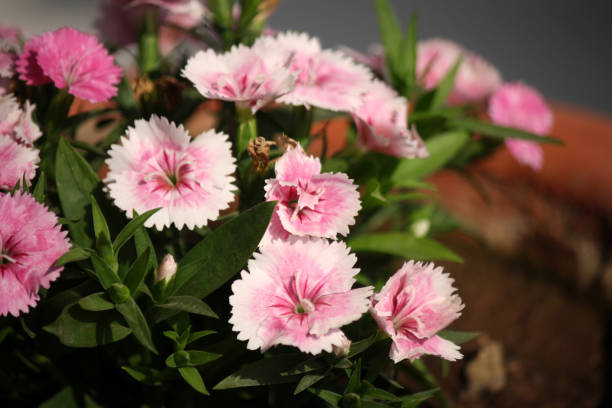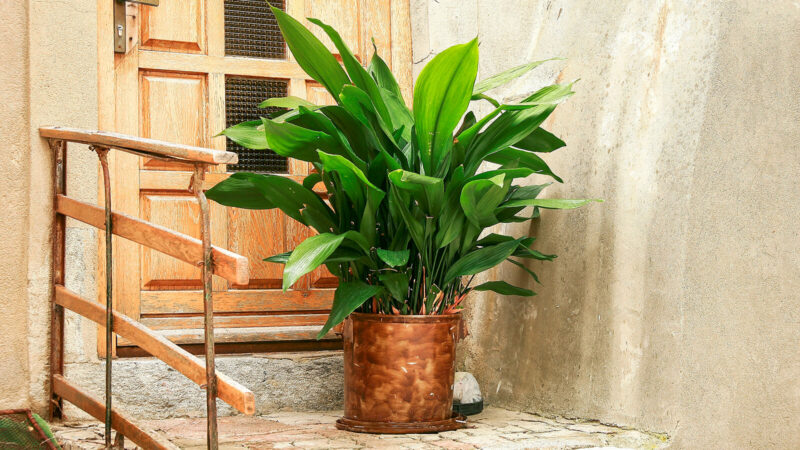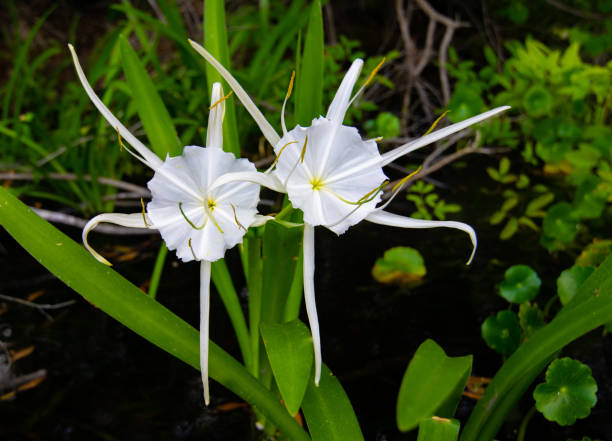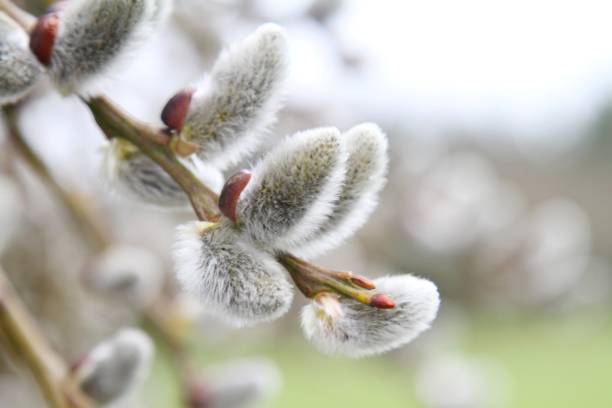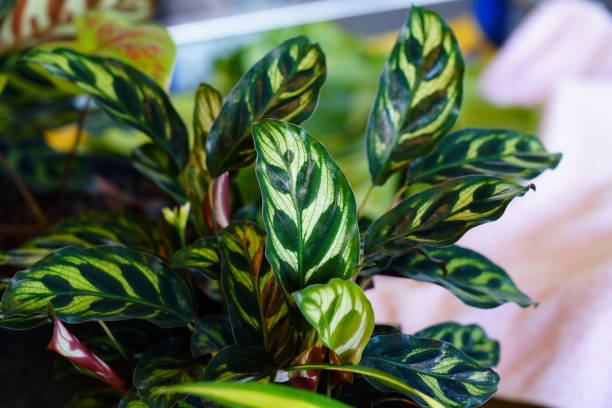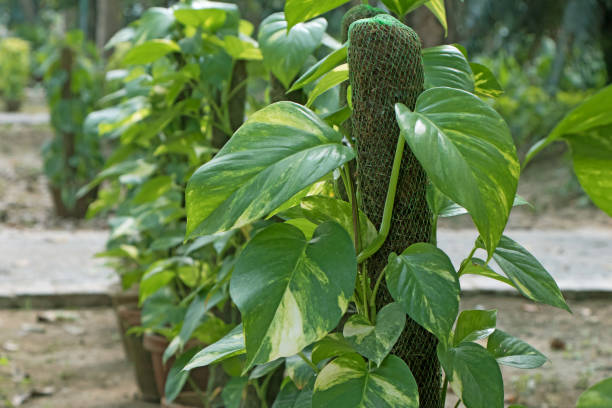How to Grow and Care for Baby’s Breath?
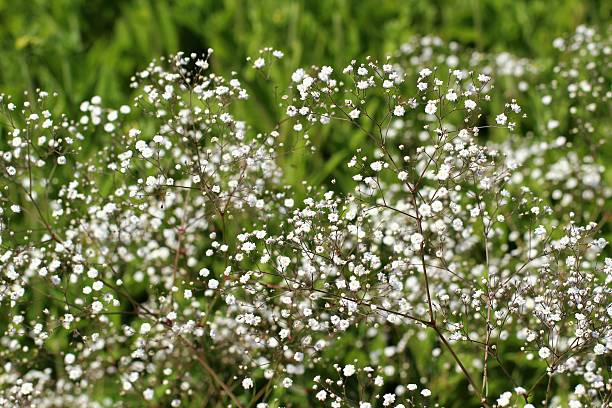
Baby’s breath, scientifically known as Gypsophila, is a delicate and dainty plant that is cherished for its cloud-like clusters of small, white or pink flowers. It is a popular choice for weddings and other special occasions. Still, it is also an excellent addition to any home garden. While a baby’s breath is relatively easy to grow and care for, some important tips and tricks can help ensure its success. This article will provide you with all the information you need to know to grow and care for baby’s breath, from selecting the right location to pruning and maintenance. Whether you are a seasoned gardener or a beginner, this guide will help you cultivate beautiful and healthy baby’s breath plants that will bring joy to your garden for years to come.
| Botanical Name | Gypsophila |
| Common Name | Baby’s breath |
| Family | Caryophyllaceae |
| Type Of Plant | Perennial, annual |
| Size(Matured) | 2–3 ft. wide, 2–3 ft. tall |
| Sun Exposure | Full |
| Type Of Soil | Well-drained |
| pH Of Soil | Alkaline |
| Time Of Bloom | Summer |
| Color Of Flower | White, pink |
| Zones Of Hardiness | 3–9 (USDA) |
| Native Area | Africa, Asia, Europe, Australia |
| Toxicity | toxic to pets,3 Toxic to people2 |
Read More About: Prayer Plant
Baby’s Breath Care

Caring for a baby’s breath is relatively easy, but some important things must be remembered to ensure the plant thrives. Here are some key steps to take:
Choose the right location
Baby’s breath prefers full sun, so choose a spot in your garden that receives at least six hours of direct sunlight per day. It also prefers well-draining soil that is not too rich in nutrients. If the soil is heavy, amend it with sand or gravel to improve drainage.
Water properly
Baby’s breath doesn’t like to be too wet, so be careful not to over-water it. Water deeply once a week, and allow the soil to dry out slightly between watering. During drought or hot weather, you may need to water more frequently.
Fertilize sparingly
Baby’s breath does not require a lot of fertilizer. Too much fertilizer can harm the plant, causing it to produce too many leaves at the expense of flowers. Use a slow-release, balanced fertilizer in early spring and again in mid-summer if necessary.
Prune regularly
Pruning is essential to keep a baby’s breath looking its best. After the first flush of flowers has faded, use scissors or garden shears to cut back the stems to about half their height. This will encourage the plant to produce more flowers later in the season.
Watch for pests and diseases
Baby’s breath is relatively resistant to pests and diseases but can be susceptible to fungal infections in humid conditions. If you notice any signs of disease or pests, such as yellowing leaves or aphids, treat the plant with an appropriate pesticide or fungicide.
Light
Baby’s breath prefers full sun, meaning it needs at least six hours of direct sunlight daily to thrive. If you’re planting it in a spot that needs more sun, you may find the plant grows tall and spindly, with fewer flowers. If so, consider pruning it back to encourage fuller growth.
Soil
Baby’s breath prefers well-draining soil and not too rich in nutrients. If your soil is heavy or clay-like, amend it with sand or gravel to improve drainage. Adding some organic matter, such as compost or aged manure, is also a good idea to help improve soil fertility.
Temperature and Humidity
Baby’s breath is a hardy plant that can tolerate various temperatures, from cool spring weather to hot, dry summers. However, it does prefer cooler temperatures, so if you live in a very hot climate, you may find that your baby’s breath doesn’t bloom as well as it could. As for humidity, the baby’s breath prefers dry air, so be sure to plant it in a spot with good air circulation.
Types of Baby’s Breath

There are several baby breath types, each with unique characteristics and growing requirements. Here are some of the most popular types:
Gypsophila paniculata

Also known as “common baby’s breath,” this is the most widely grown variety. It produces sprays of small white or pink flowers on tall stems and grows to a height of about 2-3 feet. It prefers full sun and well-draining soil and is hardy to USDA zones 3-8.
Gypsophila elegant
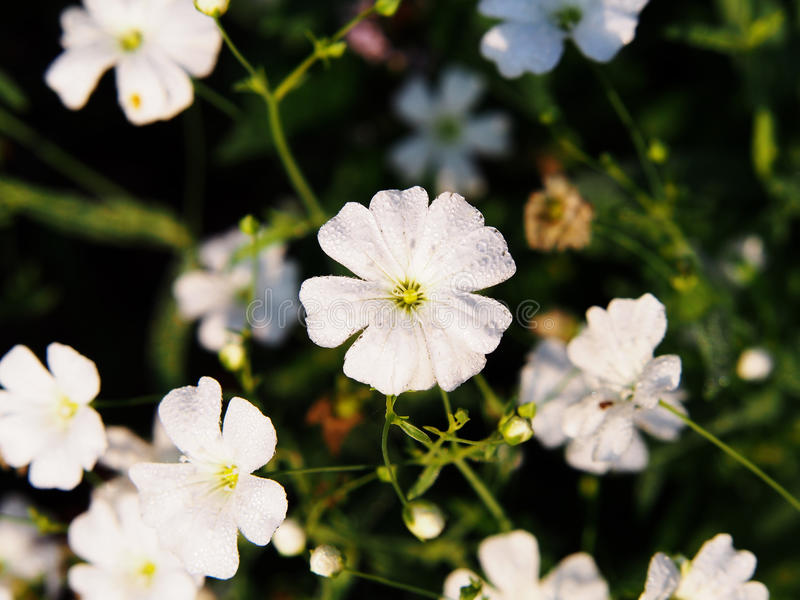
This variety is known as “showy baby’s breath” or “annual baby’s breath.” It produces delicate clusters of white or pink flowers on thin, wiry stems and grows to a height of about 12-18 inches. It prefers full sun and well-draining soil and is typically grown annually in most climates.
Gypsophila repens

This variety, also known as “creeping baby’s breath,” is a low-growing plant that forms a dense mat of foliage and produces delicate white or pink flowers. It grows to a height of about 6-12 inches and is often used as a ground cover or in rock gardens. It prefers full sun and well-draining soil and is hardy to USDA zones 3-9.
Gypsophila muralis
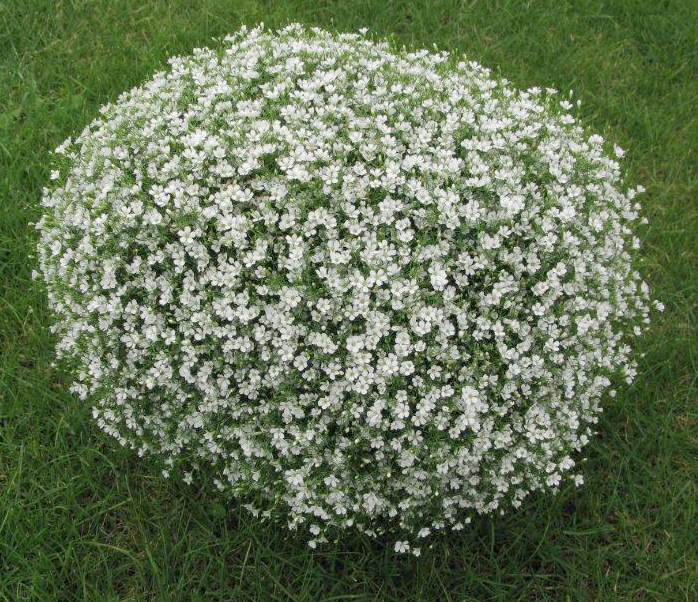
This variety, also known as “alpine baby’s breath,” is a small, compact plant that produces small white or pink flowers on short stems. It grows to a height of about 4-6 inches and is often used in rock gardens or as a border plant. It prefers full sun and well-draining soil and is hardy to USDA zones 4-8.
Gypsophila paniculata’ Bristol Fairy’
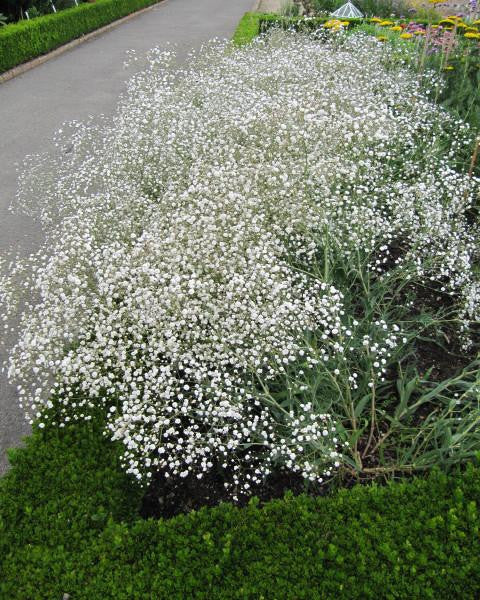
This popular cultivar of the common baby’s breath variety is known for its tall, branching stems and large clusters of small, white flowers. It grows to about 2-3 feet and prefers full sun and well-draining soil. This cultivar is hardy to USDA zones 3-8 and famous for cutting flowers and garden borders.
Gypsophila paniculata’ Compacta Plena’
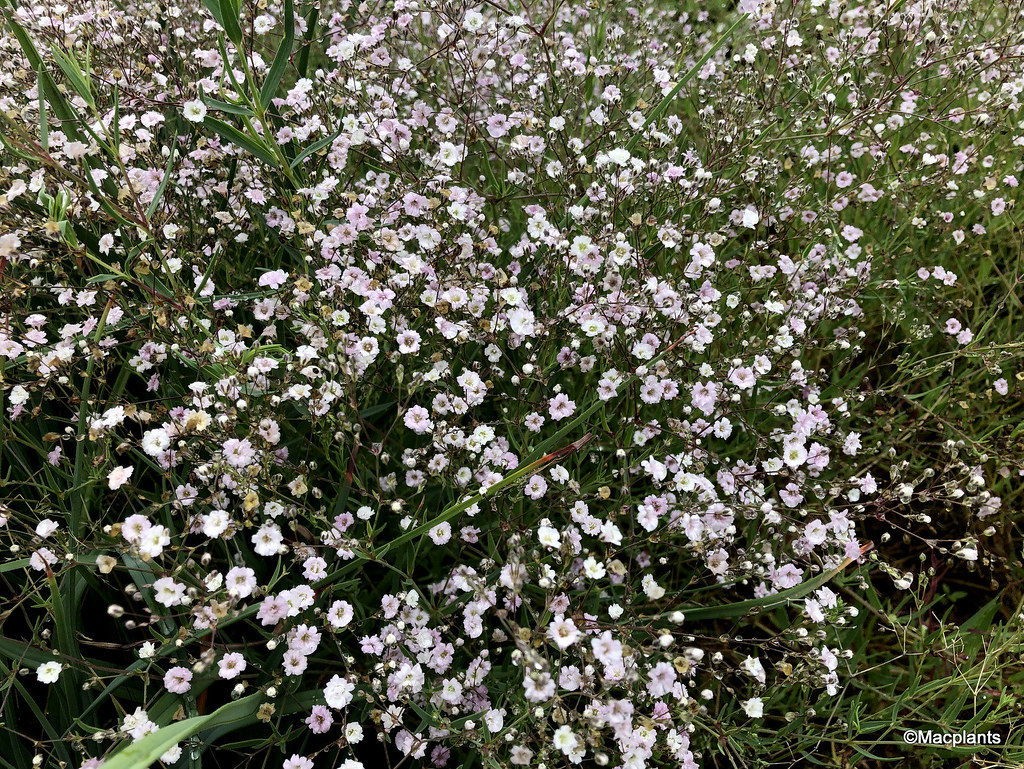
This familiar baby’s breath variety cultivar is known for its compact, bushy growth habit and double flowers. It grows to a height of about 18-24 inches and prefers full sun and well-draining soil. This cultivar is hardy to USDA zones 3-8 and famous for container and rock gardens.
Gypsophila paniculata ‘Perfekta’
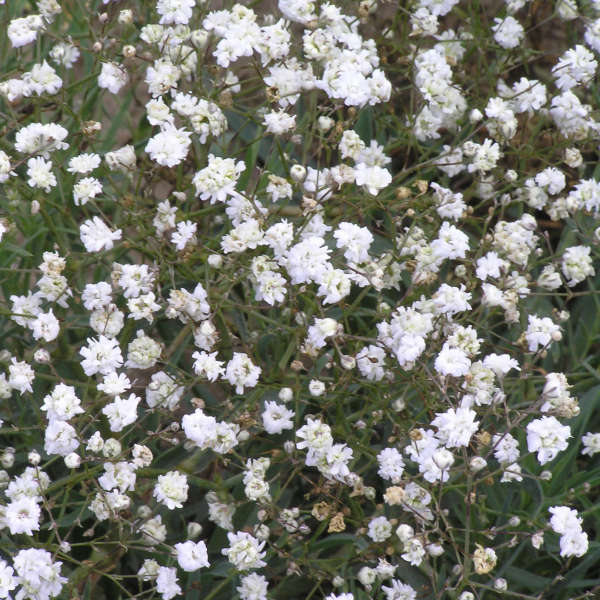
This typical baby’s breath variety cultivar is known for its abundant clusters of small, white flowers and sturdy stems. It grows to about 2-3 feet and prefers full sun and well-draining soil. This cultivar is hardy to USDA zones 3-8 and is a popular choice for cut flowers and garden borders.
Gypsophila paniculata’ Viette’s Dwarf’
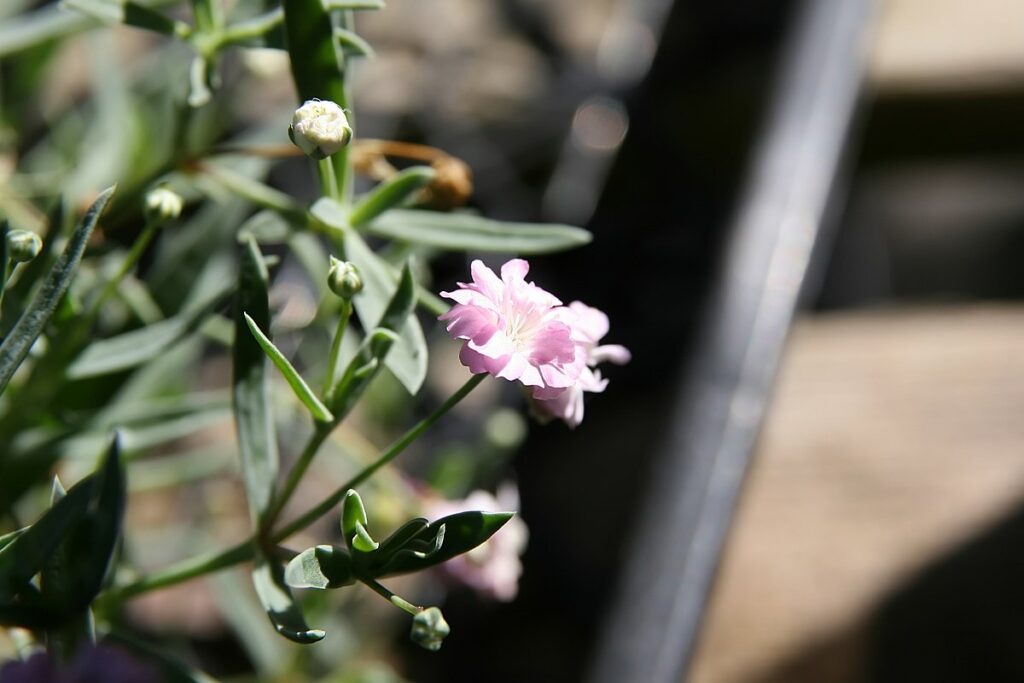
This is a compact cultivar of the typical baby’s breath variety, known for its low-growing, mounded habit and small, delicate flowers. It grows to about 12-18 inches and prefers full sun and well-draining soil. This cultivar is hardy to USDA zones 3-8 and famous for rock gardens and borders.
Pruning Baby’s Breath
Deadhead regularly
Deadheading removes spent blooms from the plant to encourage further growth and blooming. With a baby’s breath, it is important to deadhead regularly to prevent the plant from going to seed too quickly. Pinch off the dead flowers with your fingers or use pruning shears to cut the stem below the flower.
Cut back after blooming
Once the baby’s breath has finished blooming for the season, you can cut the entire plant back to about half its height. This will help to keep the plant compact and encourage new growth for the following year. Use pruning shears to make clean cuts just above a leaf node.
Divide every few years
Over time, the baby’s breath can become overcrowded and start to produce fewer flowers. To keep the plant healthy and blooming, it is a good idea to divide it every few years. Dig up the entire plant and gently separate the roots into smaller clumps, then replant in well-draining soil.
Trim as needed
If your baby’s breath starts to look leggy or overgrown during the growing season, you can trim it back to encourage bushier growth. Use pruning shears to cut just above a leaf node, and avoid cutting back more than a third of the plant at once.
Propagating Baby’s Breath

Propagating a baby’s breath is relatively easy and can be done through division or stem cuttings. Here are some steps to propagate a baby’s breath:
Division
Baby’s breath can be divided every few years in the spring or fall. Dig up the entire plant and separate the roots into smaller clumps. Make sure each clump has healthy roots and several shoots, then replant them in well-draining soil. Water the new plants thoroughly and keep them in a shaded area until they establish new roots.
Stem cuttings
- Take stem cuttings from the baby’s breath plant in early spring or fall.
- Choose a stem about 4-6 inches long with several sets of leaves.
- Use sharp pruning shears to make a clean cut just below a leaf node.
- Remove the lower leaves from the stem, leaving only a few at the top.
- Dip the cut end of the stem in rooting hormone and plant it in a container filled with well-draining soil.
- Water the cutting thoroughly and cover the container with a plastic bag to create a humid environment.
- Keep the container in a bright, shaded area and mist the cutting regularly to keep it moist. The cutting should root in about 4-6 weeks, at which point you can transplant it to a larger container or into your garden.
How to Grow Baby’s Breath From Seeds?
Growing a baby’s breath from seeds is an easy and affordable way to add this beautiful plant to your garden. Here are the steps to develop a baby’s breath from seeds:
Choose a location
Baby’s breath prefers full sun and well-draining soil. Choose a place in your garden that gets at least 6-8 hours of sunlight daily and has soil that is not too heavy or wet.
Prepare the soil
Amend the soil with organic matter, such as compost or aged manure, to improve drainage and add nutrients. Work the soil to a depth of about 8-10 inches and remove any rocks or debris.
Plant the seeds
- Sow the seeds in the prepared soil after the last frost in early spring.
- Scatter the seeds thinly on the soil’s surface and cover them lightly with a thin layer of soil or sand.
- Water the seeds gently to settle them into the soil.
Water and care for the seedlings
- Keep the soil moist but not waterlogged while the seeds germinate, which can take up to two weeks.
- Once the seedlings emerge, water them regularly but be careful not to overwater, as the baby’s breath prefers dry soil.
- Fertilize the seedlings once a month with a balanced fertilizer.
Transplant the seedlings
They can be transplanted to their final location in your garden when they have grown to about 2-3 inches tall. Space the plants about 12-18 inches apart to allow room for growth. Water the seedlings well after transplanting and keep the soil moist until they establish new roots.
Common Pest & Plant Diseases
While baby’s breath is generally a hardy and disease-resistant plant, a few pests and diseases can affect it. Here are some common issues to watch out for:
Aphids
These small, soft-bodied insects can suck the sap from the leaves and stems of a baby’s breath, causing them to wilt and turn yellow. You can control aphids by spraying the plant with water, dish soap, or insecticidal soap, or by introducing beneficial insects such as ladybugs or lacewings.
Spider mites
These tiny pests can cause yellowing and browning of the leaves and the formation of fine webs on the plant. You can control spider mites by spraying the plant with a solution of water and neem oil or insecticidal soap.
Root rot
Baby’s breath can be susceptible to root rot if the soil is too wet or poorly draining. Signs of root rot include yellowing leaves, stunted growth, and wilting. To prevent root rot, ensure the soil is well-draining and avoid overwatering.
Powdery mildew
This fungal disease can cause a white, fine coating to form on the leaves of a baby’s breath, causing them to turn yellow and die. You can control powdery mildew by improving air circulation around the plant and avoiding overhead watering. You may need to treat the plant with a fungicide in severe cases.
Rust
Rust is a fungal disease that causes orange or brown spots to form on the leaves of a baby’s breath. It can spread quickly in humid conditions. You can control rust by removing infected leaves and improving air circulation around the plant. You may need to treat the plant with a fungicide in severe cases.
How to Get Baby’s Breath to Bloom?
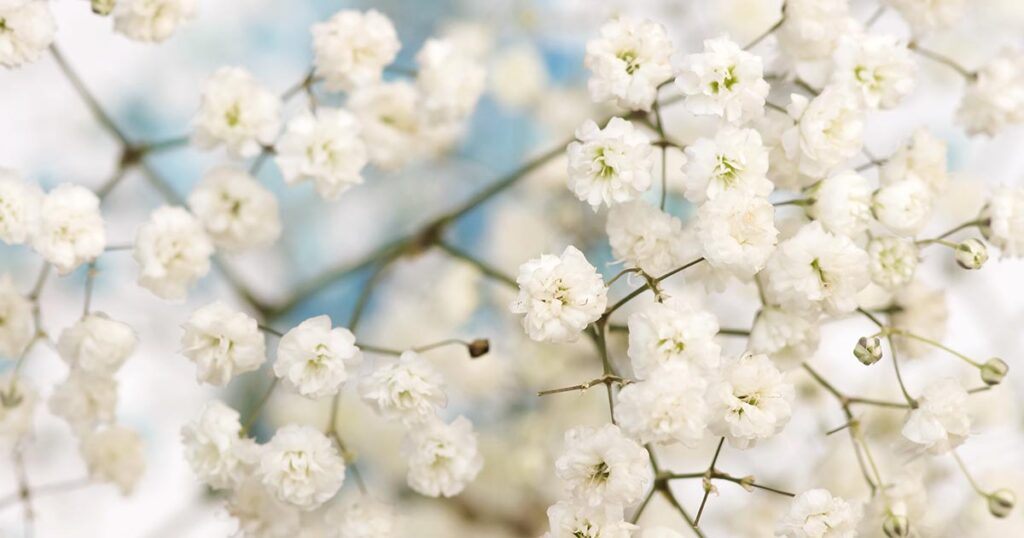
Baby’s breath is a beautiful plant known for its delicate, white flowers. If your baby’s breath is not blooming as much as you would like, there are a few things you can do to encourage it to produce more flowers:
Provide enough sunlight
Baby’s breath requires plenty of sunlight to bloom. Ensure your plant gets at least 6-8 hours of direct sunlight each day.
Prune regularly
Pruning your baby’s breath regularly can help it produce more flowers. Deadheading, which involves removing spent blooms, can encourage the plant to make more flowers. You can also prune the plant back after blooming to promote new growth.
Fertilize
Baby’s breath benefits from a balanced fertilizer rich in phosphorus. Fertilize your plant once a month during the growing season to encourage more blooms.
Water properly
Overwatering or underwatering can cause a baby’s breath to produce fewer flowers. Ensure the soil is moist but not waterlogged, and water the plant deeply once a week during the growing season.
Consider the temperature
Baby’s breath prefers cooler temperatures and can struggle in hot weather. If you live in a warm climate, try growing your baby’s breath in a cooler location, such as a north-facing wall or a spot that gets afternoon shade.
How long does a baby’s breath last after being picked?
Baby’s Breath is a popular cut flower in floral arrangements and bouquets because of its delicate and airy appearance. When properly cared for, a cut baby’s breath can last up to two weeks.
To ensure the longevity of cut baby’s breath, follow these tips:
- Cut the stems at a 45-degree angle with a sharp pair of scissors or pruning shears. This will help the stems absorb water more easily.
- Immediately place the cut stems in a clean vase or container filled with cool water. Make sure that the water covers at least half of the stem.
- Add a floral preservative to the water. These can be purchased from florist shops or garden centers and can help extend the life of cut flowers.
- Change the water every two to three days and trim the stems each time. This will help prevent the growth of bacteria and keep the flowers hydrated.
- Keep the cut flowers in a cool, dry place away from direct sunlight and drafts. Avoid placing them near ripening fruit or in areas with high humidity, as this can cause them to deteriorate more quickly.
Some Frequently Asked Questions(FAQs)
Does baby’s breath blooms have a smell?
Baby’s breath blooms do have a light, sweet fragrance. The scent is subtle and not overpowering, but it can be noticeable when the flowers are arranged in large quantities.
Is baby’s breath an annual or perennial flowering plant?
Baby’s breath is a herbaceous perennial plant. It lives for multiple years and dies back to the ground each winter. However, in colder climates, it may not survive the winter and is grown as an annual instead. Gypsophila paniculata, the most commonly grown species of baby’s breath, is a perennial in USDA hardiness zones 3-9. However, some annual baby breath varieties, such as Gypsophila elegans, are typically grown in warmer climates.
Q: How long does a baby’s breath bloom last?
A: Baby’s breath blooms typically last several weeks when grown in the garden. As cut flowers, they can last up to two weeks with proper care.
Q: Is baby’s breath easy to grow?
A: Yes, a baby’s breath is generally an easy plant to grow. It requires minimal maintenance and thrives in a variety of conditions.
Q: How much sunlight does a baby’s breath need?
A: Baby’s breath prefers full sun but can also tolerate partial shade. It may benefit from some afternoon shade in hotter climates to prevent the flowers from wilting.
Q: How often should I water my baby’s breath plant?
A: Baby’s breath prefers well-draining soil and should be watered when the top inch of soil feels dry to the touch. Overwatering can cause the plant to rot, so be sure not to let it sit in water.
Q: Can a baby’s breath be grown indoors?
A: Baby’s breath can be grown indoors in bright, indirect light. However, it may not flower as prolifically as outdoors in full sun.
Q: Does the baby’s breath require fertilizer?
A: Baby’s breath can benefit from a balanced, all-purpose fertilizer applied monthly during the growing season. Be careful not to over-fertilize, which can cause the plant to become leggy.
Q: Is a baby’s breath toxic to pets or humans?
A: Baby’s breath is not toxic to humans but can cause mild skin irritation in some people. It is not known to be harmful to pets, but keeping any plant out of reach of curious animals is always a good idea.
Q: How do I propagate baby’s breath?
A: Baby’s breath can be propagated from stem cuttings taken in the summer or by dividing mature plants in the spring or fall. Seeds can also be sown indoors in the late winter or early spring.
Conclusion
In conclusion, Baby’s Breath is a beautiful and versatile plant that can add a delicate touch to any garden or floral arrangement. Its airy white blooms and subtle fragrance have become famous for weddings, special occasions, and home gardens.
Growing and caring for a baby’s breath is relatively easy, as it is a low-maintenance plant that thrives in a variety of conditions. By providing the right amount of sunlight, water, and fertilizer and taking care to prune and propagate the plant as needed, you can enjoy its beauty for years to come.
Whether used as a filler flower in bouquets and floral arrangements or as a standalone plant in a garden, baby’s breath is a stunning addition to any setting. So next time you’re looking for a delicate, understated flower to brighten your space, consider adding some baby’s breath to your collection.
Related Articles
- Carnation Flower: Plant Care and Growing Guide
- How to Grow and Care for the Cast Iron Plant?
- Spider Lily: A Guide to Growing and Caring for this Stunning Flower
- How to Grow and Care for Pussy Willows
- Zebra Plant Care: Growing Aphelandra Squarrosa At Home
- 8 Prosperous Types of Money Plants in Feng Shui to Bring Wealth and Abundance
- A Comprehensive Guide on Growing and Caring for Majesty Palm
- How to Grow and Care for Baby’s Breath?
- Rhododendron Plant: Rhododendron Care In Your Garden
- Iris Flower – All You Want To Know About Them

